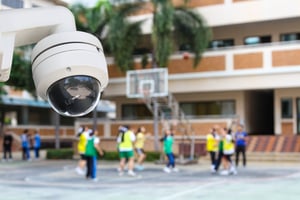
When we think of summer, we often think of families on vacation, busy airports, and roadways packed with weekend travelers. If we think about school at all, we picture quiet hallways waiting for students to return in the fall. Yet for the education industry, quite the opposite is true. Because installation projects can be disruptive, especially within a learning environment, schools have a very short window for facility and technology upgrades, during summer break.
While many industries have blackout periods, they are typically short. In Education, however, the blackout period is often the entire school year. This means most schools, whether public or private, have approximately two to three months during the summer to address routine building maintenance, facility updates, and technology upgrades. This limited timeframe makes prioritization key.
Mobility and Connectivity in Education
The role of technology in education grew exponentially after the explosion of the mobility market. From the influx of devices to manage to the use of instructional technology to aid student learning, schools have invested heavily in WIFI infrastructures. This applies whether an individual school, a campus, or an entire district. Connectivity has become so important to education that an organization called Connect k-12 has a website that “aggregates, analyzes, and visualizes E rate data.” The site is designed to evaluate internet speeds and rates to calculate the “internet cost per student” for public school funding formulas.
Technology and school safety
One of the big questions being asked today, especially given the current climate of gun violence, is whether technology can make our kids safer. According to the Partner Alliance for Safer Schools (PASS) security guidelines for K–12 schools, there are several key strategies and communication technologies that schools should incorporate:
- A public address system
- Radios with access to frequencies used by emergency services
- A two-way intercom system with call buttons
- A duress button system for offices and classrooms
- An in-building emergency communication system
- Mass notification tied to a districtwide system
- Use of mobile applications and social media
Other security technologies schools are increasingly evaluating and prioritizing include:
- Access Control
- Metal detectors
- Surveillance cameras
- Panic buttons with lockdown automation triggers
Almost every school today is equipped with some type of access control and/or surveillance cameras. It’s also important to remember that physical security equipment, especially in educational environments, also needs a cybersecurity component for a different layer of protection. One that safeguards their privacy.
According to Jonathan Nguyen-Duy, vice president of strategy and analytics at Fortinet “The integration of physical security solutions, such as surveillance cameras and badge readers, with network security requires additional controls designed to recognize and respond to threats. By operating cameras on Next Generation Firewalls (NGFWs), for example, these devices would be protected against hacking attempts and other threats.” (eSchoolMedia)
The physical technology itself can also play a role in the level of protection it affords. For example, off-the-shelf cameras that cannot be integrated into the network, cannot provide historical information such as the location of a specific person, and lack network intelligence should typically be avoided.
Barriers to Adoption
According to a research brief by the RAND Corporation, the main barrier to the adoption of metal detectors is the belief that they “encouraged students to have negative attitudes toward school, making schools seem too fortified and unwelcoming.”
Cost is often a significant barrier overall, particularly for public schools with limited funding for technology investments. Also, student privacy concerns.
However, one of the largest barriers, which garnishes the least amount of attention, is time. As schools are facing increased pressure to “make schools safer,” they also must contend with a variety of factors that can easily throw up roadblocks during the process. For example, aging facilities may not have the wireless infrastructure to properly support a security solution. Rural schools may have higher cabling costs due to remote locations and no cellular backups. Those barriers will need to be addressed first, often complicating timelines.
Hope for Educators
The key to success, for any technology implementation project, boils down to one critical factor: access. While it may seem obvious that access is a critical component, the logistics behind ensuring accessibility are often underestimated or even overlooked.
In the transportation world, the “Site” is a moving target with complex scheduling and logistical considerations. In the facilities world, verticals and environments change, but every project has its constraints to minimize impact. In the case of educational institutions, the impact could be detrimental to the learning environment, so it’s relegated to the break between school terms.
However, the right implementation partner will not only ensure critical timeframes are met; they will also be capable of combining scopes. Because time and access should never be a barrier to safety.
